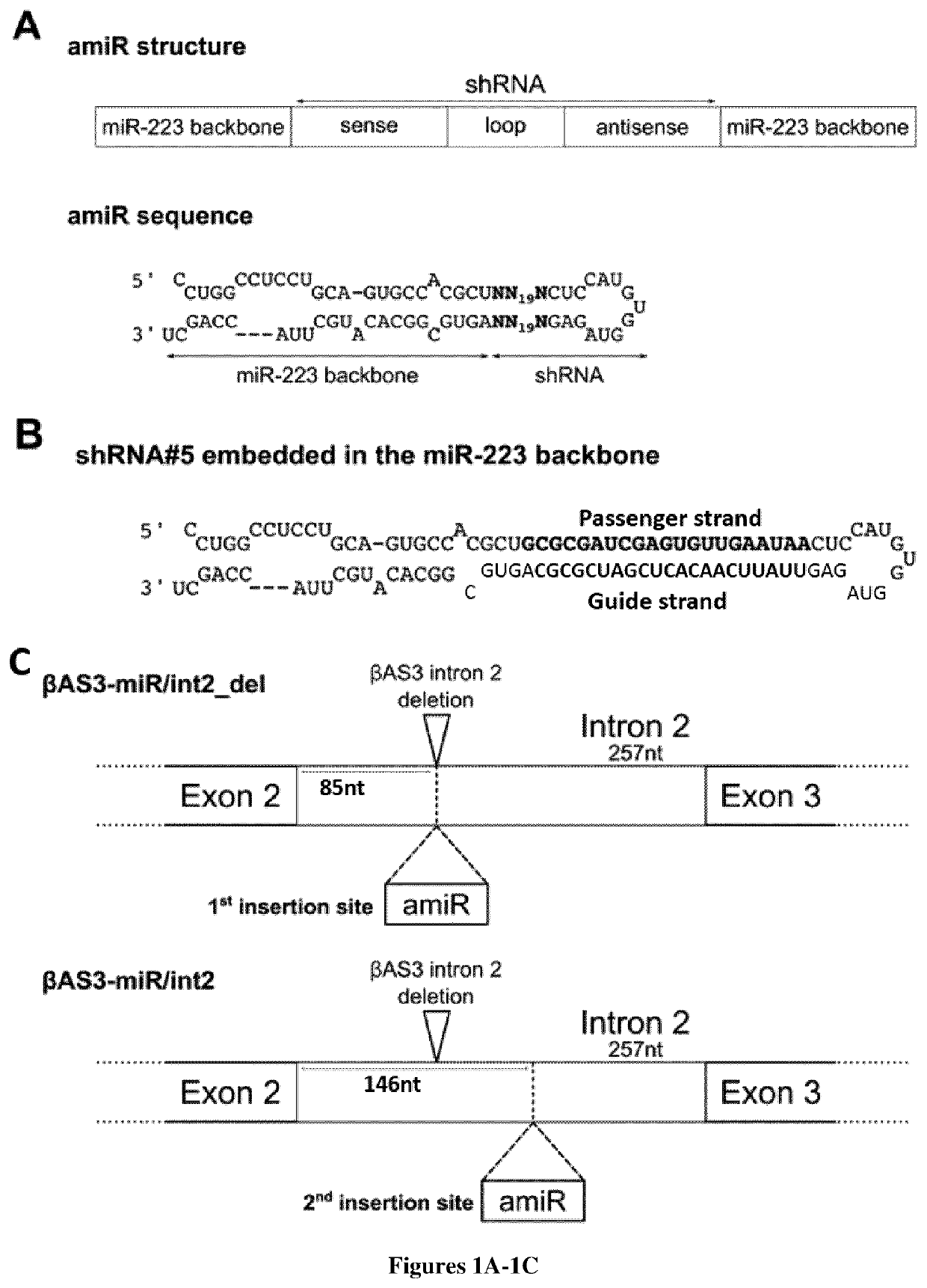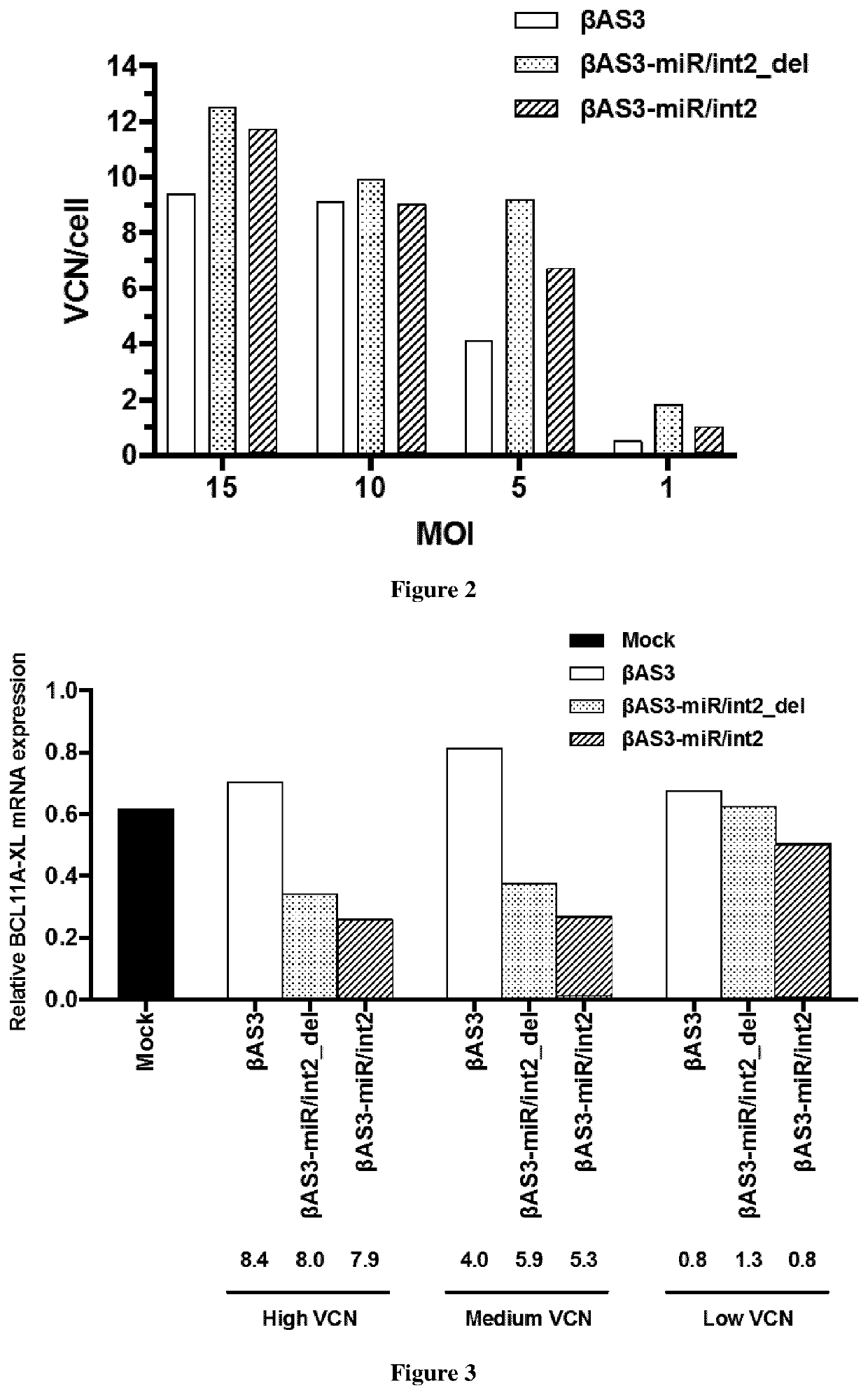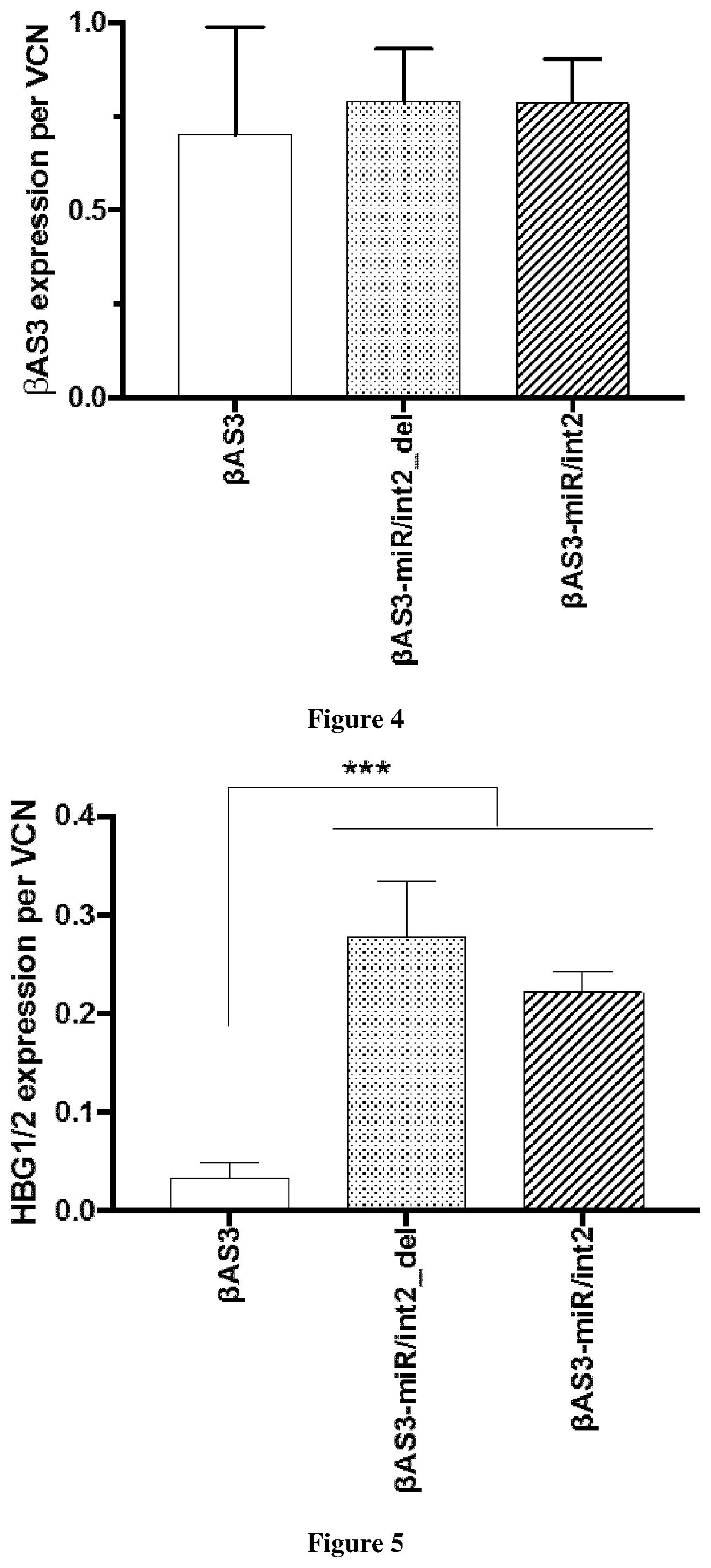Bifunctional vectors allowing bcl11a silencing and expression of an Anti-sickling hbb and uses thereof for gene therapy of b-hemoglobinopathies
a technology of bcl11a and bcl11a, which is applied in the direction of drug composition, peptide/protein ingredients, extracellular fluid disorder, etc., can solve the problems of hemolytic anemia, erythroid precursor apoptosis, and impairment of erythroid differentiation
- Summary
- Abstract
- Description
- Claims
- Application Information
AI Technical Summary
Benefits of technology
Problems solved by technology
Method used
Image
Examples
Embodiment Construction
[0009]Here, the inventors intend to improve HSC-based gene therapy for β-thalassemia and SCD by developing an innovative, highly infectious LV vector expressing a potent anti-sickling β-globin transgene and a second biological function either increasing fetal γ-globin expression (for β-thalassemia and SCD). More particularly, the inventors have designed a novel lentivirus (LV), which carry two different functions: βAS3 gene addition and gene silencing. This last strategy allows the re-expression of the fetal γ-globin genes (HBG1 and HBG2) and production of the endogenous fetal hemoglobin (HbF). Elevated levels of HbF and HbAS3 (Hb tetramer containing βAS3-globin) will benefit the β-hemoglobinopathy phenotype by increasing the total amount of β-like globin that will: (i) reduce the alpha precipitates and improve the alpha / non alpha ratio in β-thalassemia, and (ii) reduce the sickling in SCD. This combined strategy will improve the β-hemoglobinopathy phenotype at a lower vector copy n...
PUM
| Property | Measurement | Unit |
|---|---|---|
| time | aaaaa | aaaaa |
| time | aaaaa | aaaaa |
| time | aaaaa | aaaaa |
Abstract
Description
Claims
Application Information
 Login to View More
Login to View More - R&D
- Intellectual Property
- Life Sciences
- Materials
- Tech Scout
- Unparalleled Data Quality
- Higher Quality Content
- 60% Fewer Hallucinations
Browse by: Latest US Patents, China's latest patents, Technical Efficacy Thesaurus, Application Domain, Technology Topic, Popular Technical Reports.
© 2025 PatSnap. All rights reserved.Legal|Privacy policy|Modern Slavery Act Transparency Statement|Sitemap|About US| Contact US: help@patsnap.com



